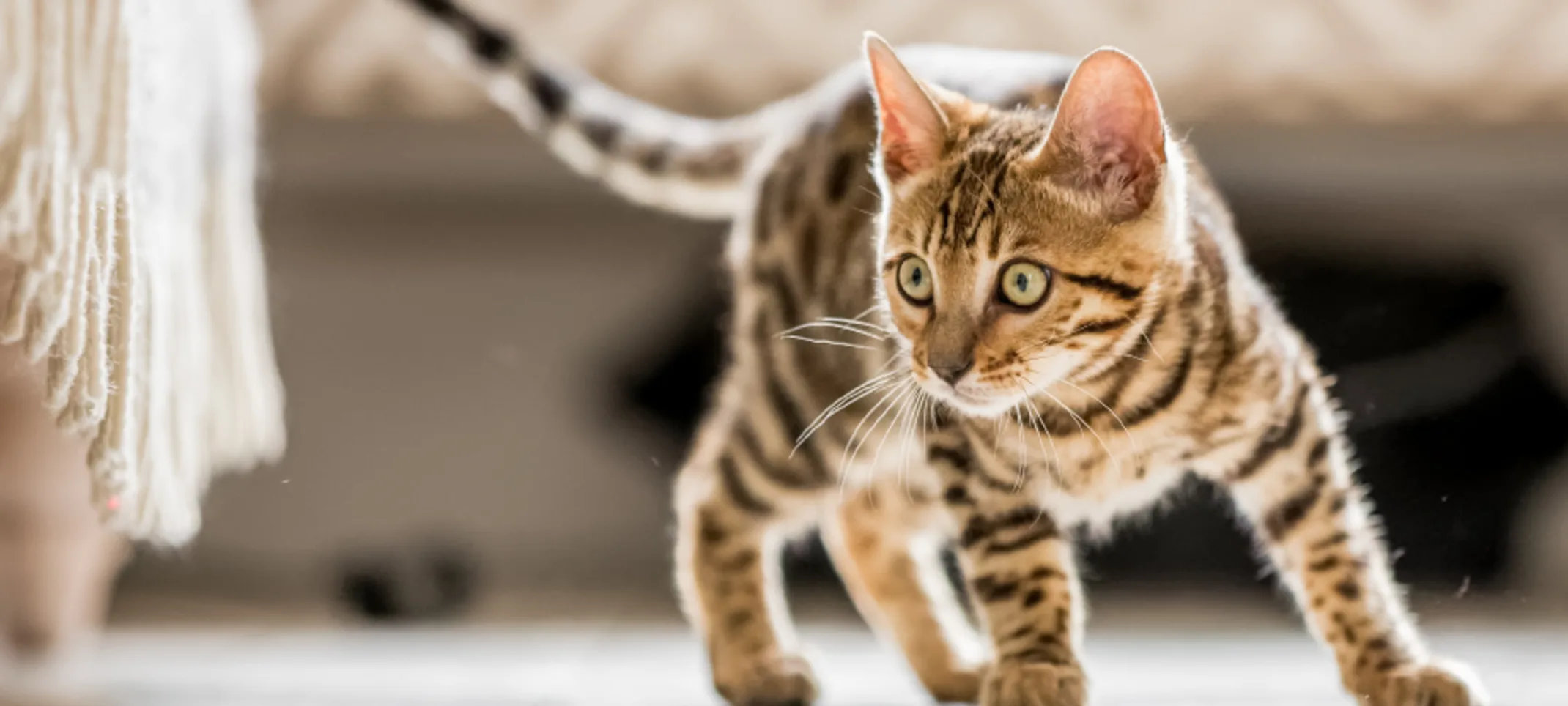Blue Cross Animal Hospital
Outside of routine care, FLUTD, or Feline Lower Urinary Tract Disease is one of the leading reasons pet owners take their cats to the veterinarian.
Feline Lower Urinary Tract Disease is a term used to describe a group of disorders or diseases that affect the lower urinary tract (bladder or urethra) in cats. FLUTD is often associated with the formation of crystals or stones in the urinary tract that can have painful and potentially fatal consequences for your cat. The two most common types of crystals/stones are struvite and calcium oxalate.
The most severe possible effect of FLUTD is complete blockage of the urethra. If the urethra is blocked, urine cannot be voided from the bladder. The bladder wall stretches painfully. Imagine you are on a bus that won’t stop and you need to go the bathroom. Painful isn’t it? That’s why a blocked cat screams so much.
When the bladder wall reaches maximum stretch, urine starts to back up in the kidneys and the toxins and wastes the kidney is supposed to be excreting spill back into the blood stream. The cat becomes toxic. This can eventually lead to death if the obstruction is not relieved.
Prevention
There are multiple factors involved in FLUTD but one that can be controlled is diet. Foods high in magnesium, phosphorus, and calcium have been linked to crystal and stone formation. Feeding your cat a product with restricted amounts of these minerals can decrease the likelihood of crystals forming, and assist in the dissolution of some types of stones that have formed in the urinary tract. Please discuss food choices with your veterinarian.
Although food is an important factor in preventing FLUTD, there are other issues that contribute to cats developing the disease. These include:
Cats more than 1 year of age are most susceptible.
Lack of exercise
Reduced water intake
Multiple pet households
Stress–Potential causes of stress include house guests, conflict with other pets, or a lack of places to rest or hide
Both males and females get the disease with equal frequency
Males have a greater risk of life-threatening urethral obstruction from the crystals or stones as the urethra is much narrower in the male.
Symptoms
If your cat is exhibiting these symptoms, your pet may have FLUTD. This is a painful and potentially life threatening condition. You should seek immediate veterinary care.
Straining to urinate
Crying or screaming when trying to urinate
Licking penis or vulva
Frequent Urination
Blood in the urine
Reduced appetite
Lethargy
Increased activity around the litterbox, for example going in and out of the litterbox frequently
Treatment
For cats who are brought to the clinic with blood in the urine and some of the other signs listed above, but not complete blockage, several tests are recommended. We test the urine, do radiographs and sometimes blood tests to determine the best treatment. This may be as simple as diet change but sometimes surgical removal of bladder stones is required. Medications may be prescribed in some cases.
Treatment for urethral obstruction, or blocked bladder, involves passing a catheter and flushing the blockage out to let the urine flow. This usually requires sedation or an anesthetic. Blocked cats also need to have blood tests done to see how the kidneys are functioning and to determine how toxic the cat is. Intravenous fluids are needed once the obstruction is relieved to flush all those toxins out. X-rays of the urinary system help determine if there are small stones or a large load of crystals in the bladder and urethra.
Generally the intravenous fluids and urinary catheter are continued in for 1-2 days until the cat is eating well and kidney function has returned to normal. The urethra is often swollen after being obstructed and it is not unusual for a cat to block again in the days after the catheter is removed. This may require the urinary catheter to be replaced. Medications are given to decrease swelling and spasm.
The treatment of a blocked cat can take up to a week or more to get them urinating normally on their own. This is a stressful, uncomfortable time for the cat and an expensive time for the owner. In other words, a good case of prevention being the best medicine.
Preventing Recurrence
Any cat that has been treated for urinary tract disease runs the risk of developing it again. Therefore, it’s very important to continue with the nutritional management of the disease and to watch your pet closely for recurring symptoms.
Ways to decrease the chance of reoccurrences of FLUTD are to
Make sure water is clean, fresh and available at all times, to encourage your cat to increase her water consumption
Feed the diet recommended by your veterinarian
Feeding moist food also helps increase water consumption
Feed several small meals during the day instead of one or two larger meals
Decrease stress in the environment
Provide scratching posts and schedule time during the day to play with your cat
Monitor the changes in the home and any conflicts with other pets in the house
Cats are very sensitive to their environments and reducing potential causes of stress, especially for a cat with FLUTD, can go a long way to improving your pet’s life and preventing recurrence of the disease.


